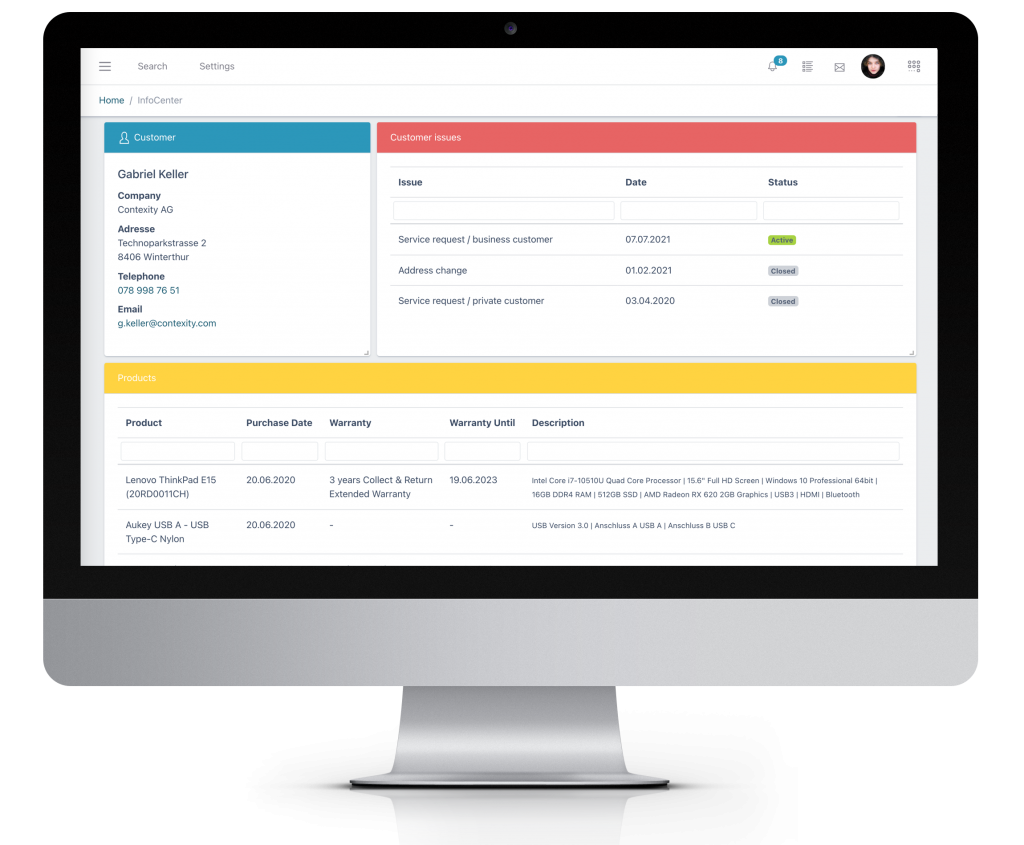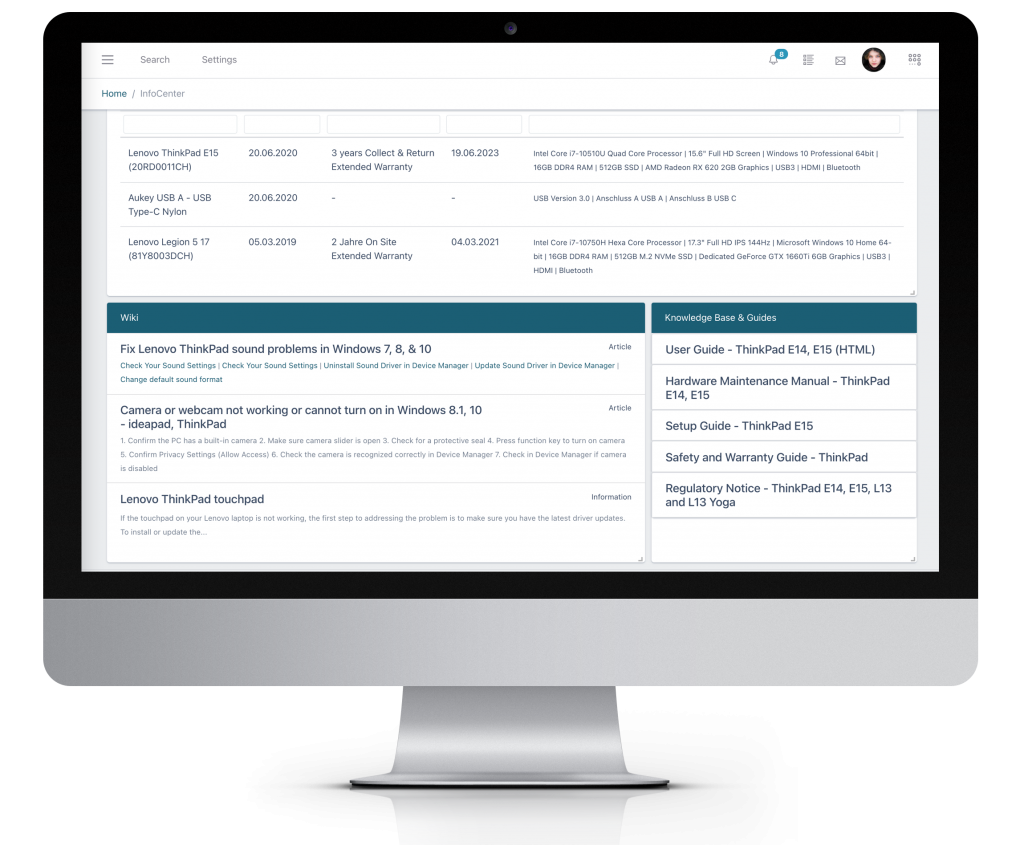
In the fast-paced, fully digitized business era, it is becoming increasingly difficult for customer service to handle all customer issues in a timely manner. Currently, in particular, as an exponential increase in customer inquiries has been recorded during the Covid 19 pandemic.
When resolving service issues, live chat and email are the last resort for customers before attempting to speak directly with a customer service representative [1]. Nearly half of the customers (46%) expect their emails to be answered in less than 4 hours, but the average response time is more than 12 hours, but only 20% of companies are able to fully answer questions on the first response [2].
Modern tools help service representatives to respond to service requests in a well-informed and an efficient manner. Our smartCC product line provides proactive support for customer communication on all channels. In this article, we take a look at how smartCC supports service desk staff at handling requests that come in via email.
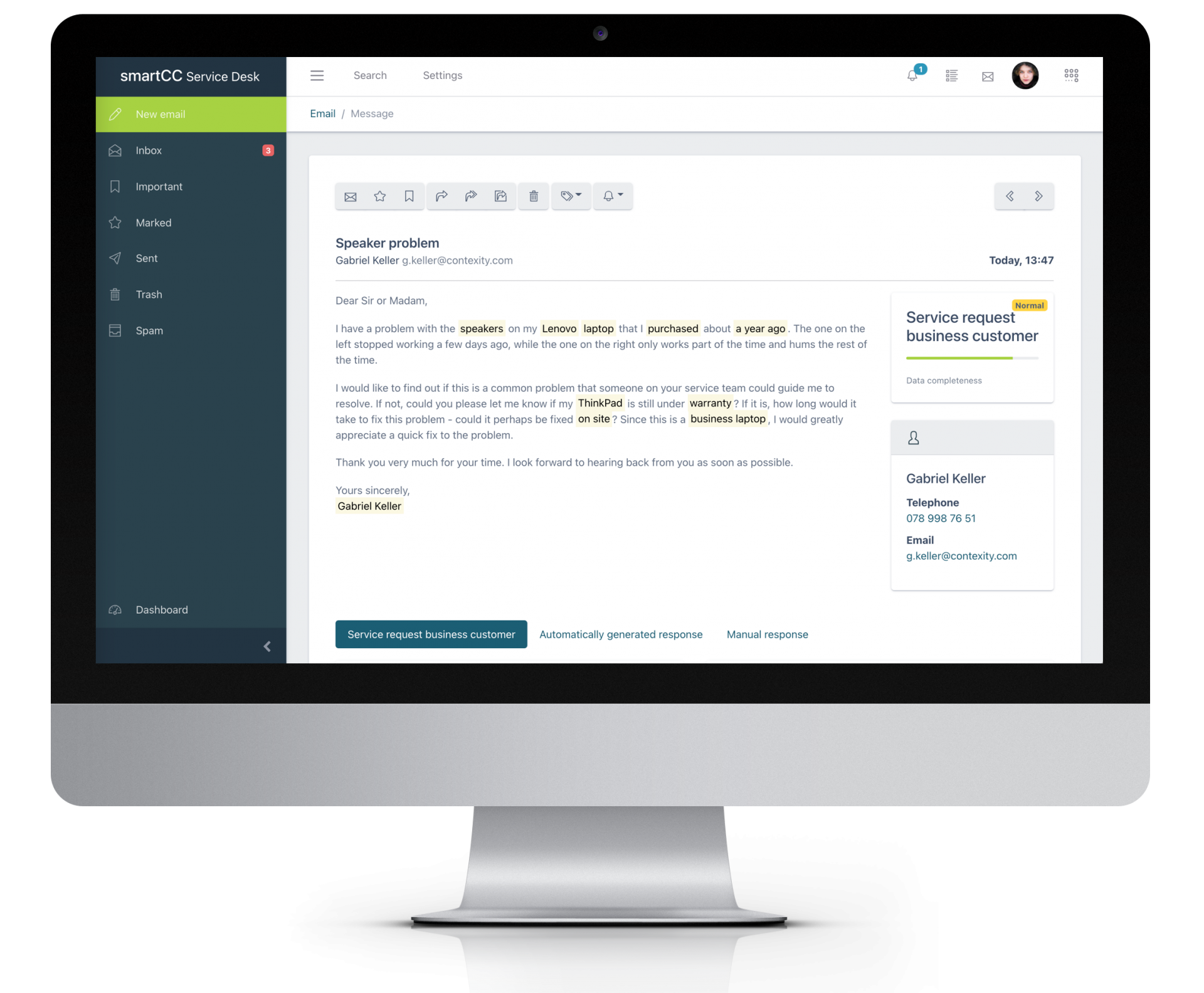
smartCC categorizes the analyzed emails, identifies the expressed issue, collects the information necessary to handle the case and prepares response emails.
Case study: IT Helpdesk
Let’s take a look at a concrete example from an IT helpdesk: Incoming emails are “read” by smartCC and combined with previous emails and conversations from other channels. Already in the overview, the service employee sees that the request is a “service request from a business customer” and its priority.
The figure on the left shows some aspects of the email contents’ analysis of performed by smartCC: the request has been recognized and automatically activated; the most important information is highlighted in the e-mail text and “Gabriel Keller” has been identified as the customer and his contact data is available.
Everything at a glance
For a more comprehensive picture, the InfoCenter is available to the service employee: in the background, smartCC searches the various company systems such as CRM, ERP, PIM, Wiki, etc. for relevant information on the case at hand, the customer, his products and previous issues, and compiles all the information related to the case in a clearly manner.
This way, one can quickly and easily recognize that the service request from “Mr. Keller” regarding his “Lenovo laptop” relates to the “Lenovo ThinkPad E15” which he purchased about a year ago. Operating manuals and FAQs for this laptop model and especially articles addressing audio problems have also been retrieved automatically.
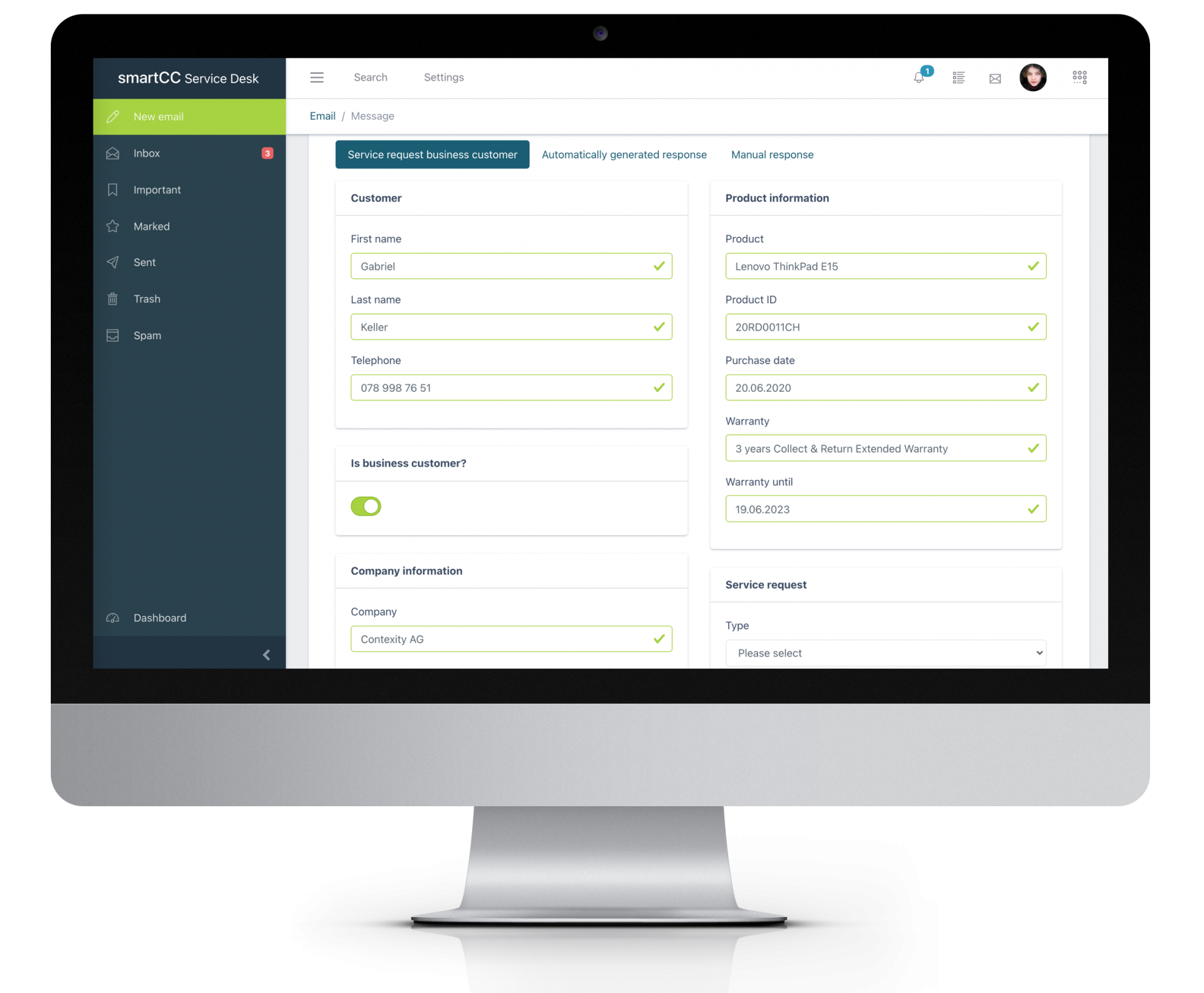
1, 2, 3 … done!
Since smartCC knows the customer issues, processes and data, it can create a form for the current issue and autonomously enter all the information it knows. For this, smartCC uses the data extracted from the email as well as the information retrieved from the company systems, such as customer, purchased product including warranty details, and so on. The customer service representative can manually make changes or additions before the case data is saved or passed to APIs or backend systems (such as CRM, ticketing system, etc.).
Typing was yesterday
smartCC also assists in communicating with the customer by automatically generating a response email. This includes a summary of the reported information such as customer and product data as well as details about the service request and, if necessary, questions about missing information. Depending on the problem, the customer is also offered suggestions for solving the problem independently. The employee can make additions or adjustments and send the e-mail.
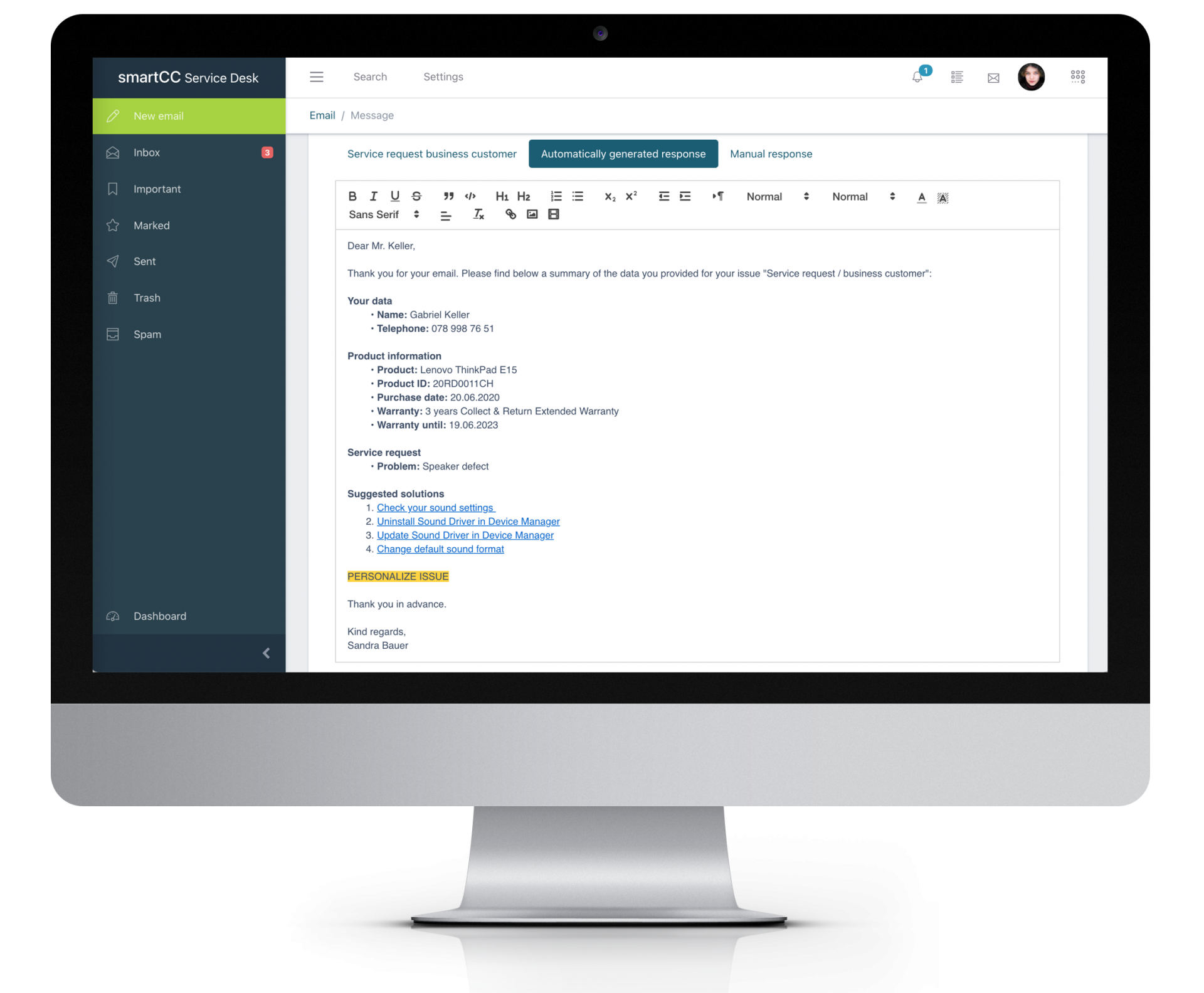
All in all, smartCC supports helpdesk staff in processing customer requests by taking over repetitive and time-consuming tasks such as gathering relevant information from various systems, filling in service forms, preparing responses to the customer or entering case data into various backend systems. Live access to all essential information from various sources speeds up the process of finding solutions and makes a significant contribution to meeting customers’ high expectations in terms of service quality and speed.
Want to know more?
[1] 2020 | CCW | Market Study | Customer Experience Trends, Challenges & Innovations
[2] 2021 | SuperOffice | Customer Service Benchmark Report

